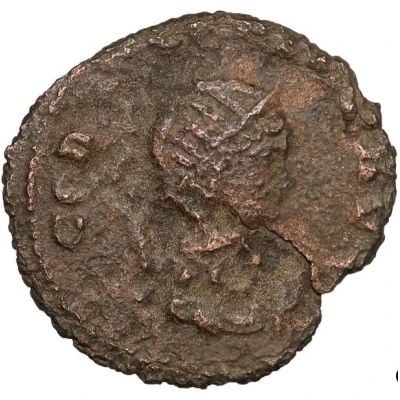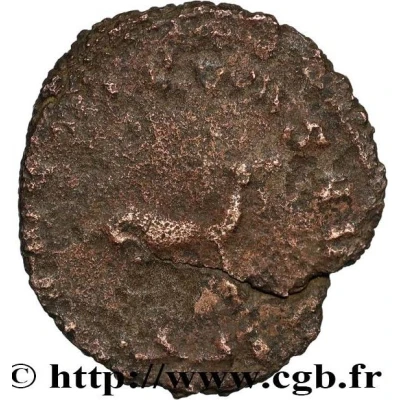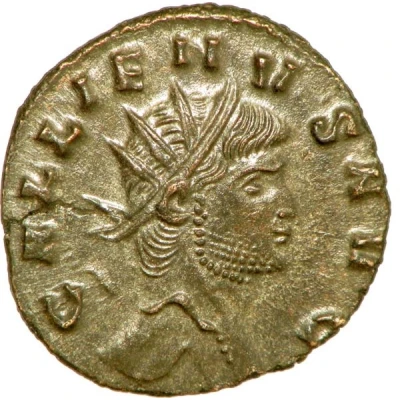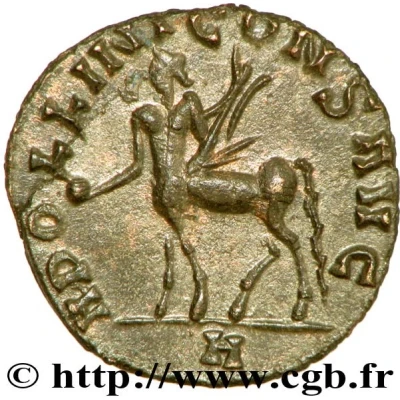Antoninianus - Gallienus P M TR P XV COS VII
| Silver | - | - |
| Issuer | Rome › Roman Empire (27 BC - 395 AD) |
|---|---|
| Emperor | Gallienus (Publius Licinius Egnatius Gallienus) (253-268) |
| Type | Standard circulation coin |
| Years | 267-268 |
| Value | Antoninianus (1) |
| Currency | Antoninianus, Reform of Caracalla (AD 215 – 301) |
| Composition | Silver |
| Shape | Round (irregular) |
| Technique | Hammered |
| Demonetized | Yes |
| Updated | 2024-10-05 |
| Numista | N#288588 |
|---|---|
| Rarity index | 100% |
Reverse
Gallienus, standing left, holding globe in right hand and sceptre in left hand.
Script: Latin
Lettering: P M TR P XV COS VII
Translation:
Pontifex Maximus, Tribunicia Potestate Quinta Decima, Consul Septimum.
High priest, holder of tribunician power for the 15th time, consul for the seventh time.
Comment
Source:Online Coins of the Roman Empire (OCRE)
Interesting fact
The Antoninianus coin was issued during the reign of Gallienus, who was the Roman Emperor from 260 to 268 AD. During his reign, the Roman Empire was facing numerous challenges, including invasions by barbarian tribes and internal conflicts. Despite these challenges, Gallienus was able to maintain the empire's stability and issue coins like the Antoninianus, which was a standard circulation coin at the time. The coin's design features the image of Gallienus on one side and the goddess Roma on the other. The inscription "P M TR P XV COS VII" stands for "Pater Mundi TRibunicia Potestate XV, Consul VII" which means "Father of the World, Tribunician Power for the 15th time, Consul for the 7th time." This inscription highlights Gallienus's authority and power as the Roman Emperor. It's also worth noting that the Antoninianus coin was made of silver, which was a valuable and widely used metal during the Roman Empire. The use of silver in coins was a symbol of the empire's wealth and power.



